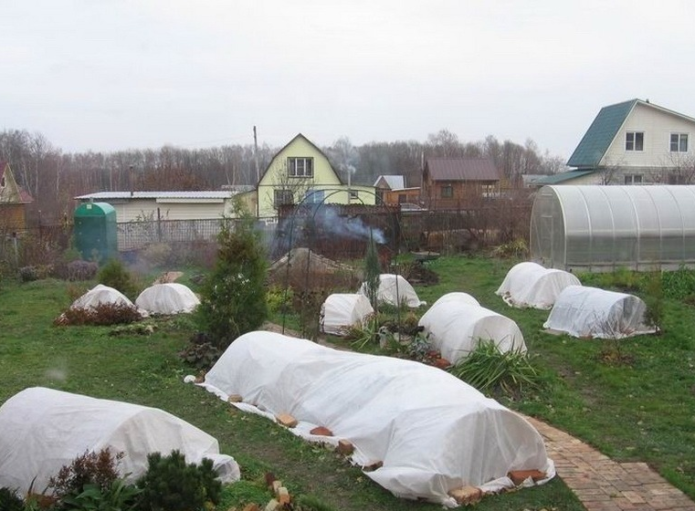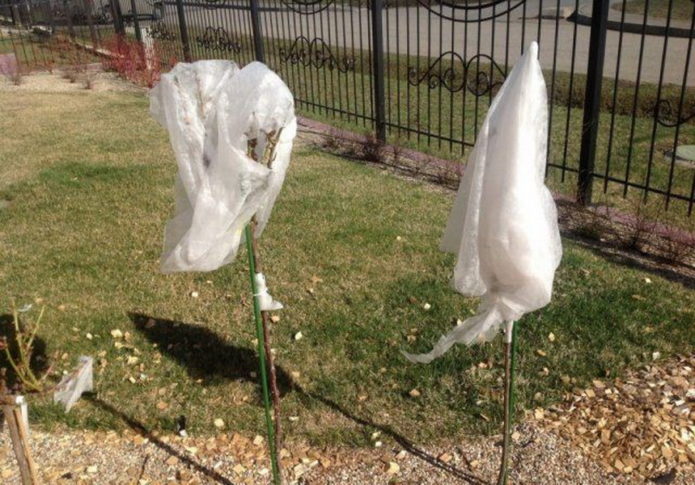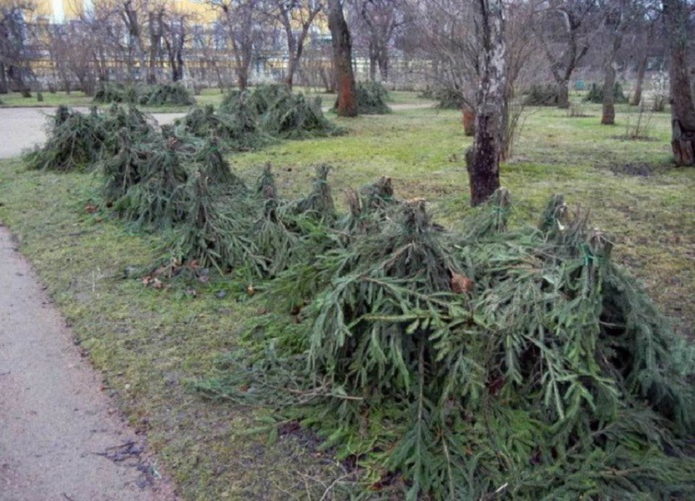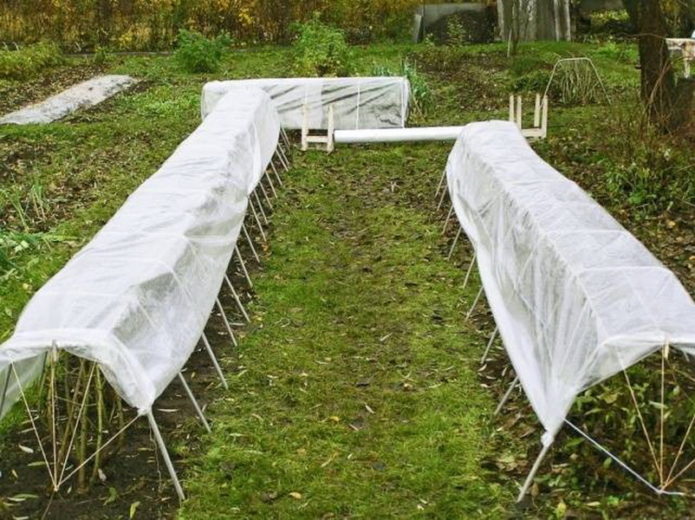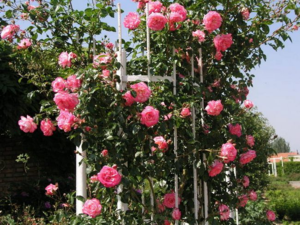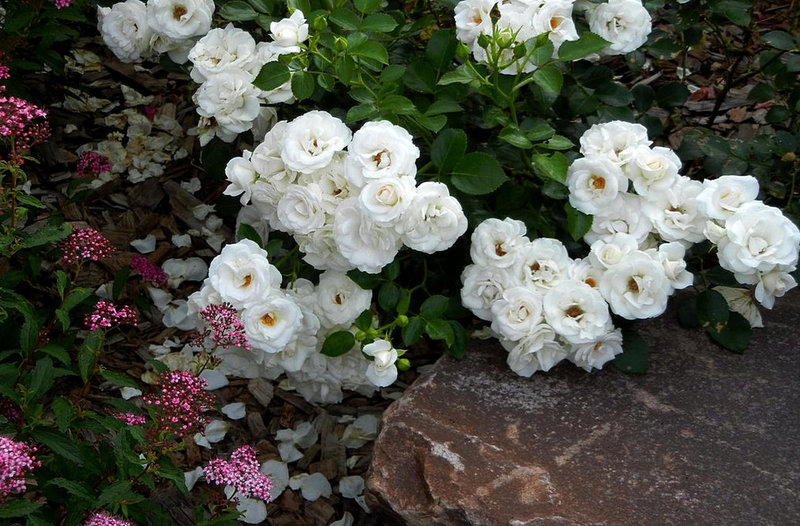Roses tolerate slight cold weather well, but when the thermometer drops below 7 °, additional shelter is required for them. Therefore, so that the cold season does not adversely affect the most attractive garden flowers, knowledge is needed on how to cover roses for the winter.
Choosing a time to hide
Covering roses too early is not recommended. Early autumn frosts do not frighten them, and even help them better prepare for wintering. Rose bushes are covered when the cold weather is fully established and the temperature is kept around -7 ° for a week. This is an indicator for most regions of Russia. In other words, the flowers prepared for winter are finally covered over the frozen ground.
Experienced flower growers know roughly when in their region the optimal period comes for taking protective measures from winter cold. For those who are just learning the basics of rose growing, below are the approximate timing of work in different regions.
| Region name | Recommended shelter period |
| Middle lane | First or second decade of November |
| Ural | Last decade of September - October |
| Siberia | End of September - October |
| Volga region | The last decade of October - November |
| Moscow suburbs | First and second ten days of November |
| Leningrad region | End of October - November |
| Kuban and other southern regions | November |
It should be covered in "dry" frost. If there was rainfall the day before, wait until the soil dries out, otherwise, under a warm shelter, the development of pathogenic fungi may begin.
What covering material is needed
In order for the rose to survive during the period of severe frosts, it is necessary to make a dry shelter for it with sufficient air. To do this, use:
- Lapnik. It creates an air gap and helps trap snow where it is needed. Thorny branches scare away rodents, but they should only be taken with green, healthy needles, so as not to bring disease. The main thing in spruce branches is that it keeps snow well. And therefore, if winter is without snow, it will not warm;
- Film and dry oak or maple leaves. They make an air-dry shelter. To do this, the plant is covered at the roots, and then a frame is built and covered with a film. It turns out a sealed shelter. This method is suitable for areas with severe winters, where there are no sharp thaws;
- Covering material: geotextile, lutrasil, spunbond. It not only protects against frost, but also removes excess moisture, preventing condensation from forming during the thaw period;
- Rags or burlap. It absorbs moisture well and is therefore not suitable for shelter in a snowy winter.
To say definitely that some option is better is impossible. The choice depends on the climate of your region, as well as on the belonging of roses to a particular group. The main thing to remember is that the flowers should overwinter under a dry shelter with sufficient air.
How to cover roses for the winter, depending on their type
Here are the basic recommendations on how to cover roses for the winter, depending on their type:
- Shrub. If planted in a row, use an air-dry shelter with arches. The covering material does not allow moisture to penetrate, and the air layer creates a favorable microclimate. To give rigidity to the structure, a board is laid on top.Its task is to help the structure resist the weight of the snow cover. Covering material is laid in 2-3 layers and fixed with clamps. At the bottom, it is securely fixed with bricks or any other heavy objects;
- Climbing, curly varieties. Before the onset of frost, at above-zero temperatures, shoots are freed from the foliage and bent to the ground, covered with branches of coniferous trees. Shoots should not touch the soil. Then they are fixed in this position using homemade wire hooks. For convenience, shoots are laid on the other side of the bend of the shoot at the base. To make it easier to work, the rose is pulled together with a rope in several places.
If a curly rose is entwined around the base of the support, it is insulated directly on the arch. The structure is wrapped in burlap, arcs are installed and two or three layers of covering material are laid. At the same time, make sure that the arcs do not touch the plant;
- Park. These are some of the most frost-resistant types of roses. They usually have stiff trunks that are difficult to bend. To make them more malleable, they dig in the roots from one side of the bush. And then, carefully, so as not to break the trunk, they tilt the plant, fix it with staples or simply press down with any improvised objects, and then cover it. Do not be afraid if the root system is damaged, there is nothing to worry about. With the onset of the warm season, it will grow again. In the south, park and climbing roses are covered vertically, using burlap or other material;
- Ground covers often do not cover at all, since this species feels great under a layer of snow. If there is little or no snow in your region during the cold season, use spruce branches, setting it in the form of a hut, or one of the types of non-woven material;
- Floribunda is another representative of frost-resistant species. This beauty, capable of delighting with abundant flowering almost the entire summer season, sprinkles the trunk with earth or peat. For most climatic zones, such a shelter for a rose will be sufficient;
- Hybrid and hybrid tea dig in within a radius of 20–40 cm from the base and cover the upper shoots with dry foliage and spruce branches or cover with non-woven material;
- Stamp. Their weak spot is the grafted part of the plant. To protect it, the crown is wrapped with 2-3 layers of any non-woven material, and then the stem is bent to the ground so that the crown practically lies on it. Pegs are installed nearby and the bush is fixed in this position. Then they cover the crown with spruce branches. A highly branched crown should be tied up before shelter. Standard roses up to 80 cm high are not bent down, but simply wrapped with a non-woven material and a cloth or plastic bag is put on top of it;
- Polyanthus and miniature roses are sprinkled with peat or covered with earth to a height of 20 cm and covered with spruce branches.
One of the common mistakes novice florists make is covering a rose bush too early, even before the first frost. This can lead to the fact that with the onset of a thaw, it can simply resist and die. Remember that the main insulation in the winter is snow. Therefore, an unclosed rose is much more likely to endure the winter cold than a plant that is not covered correctly.
